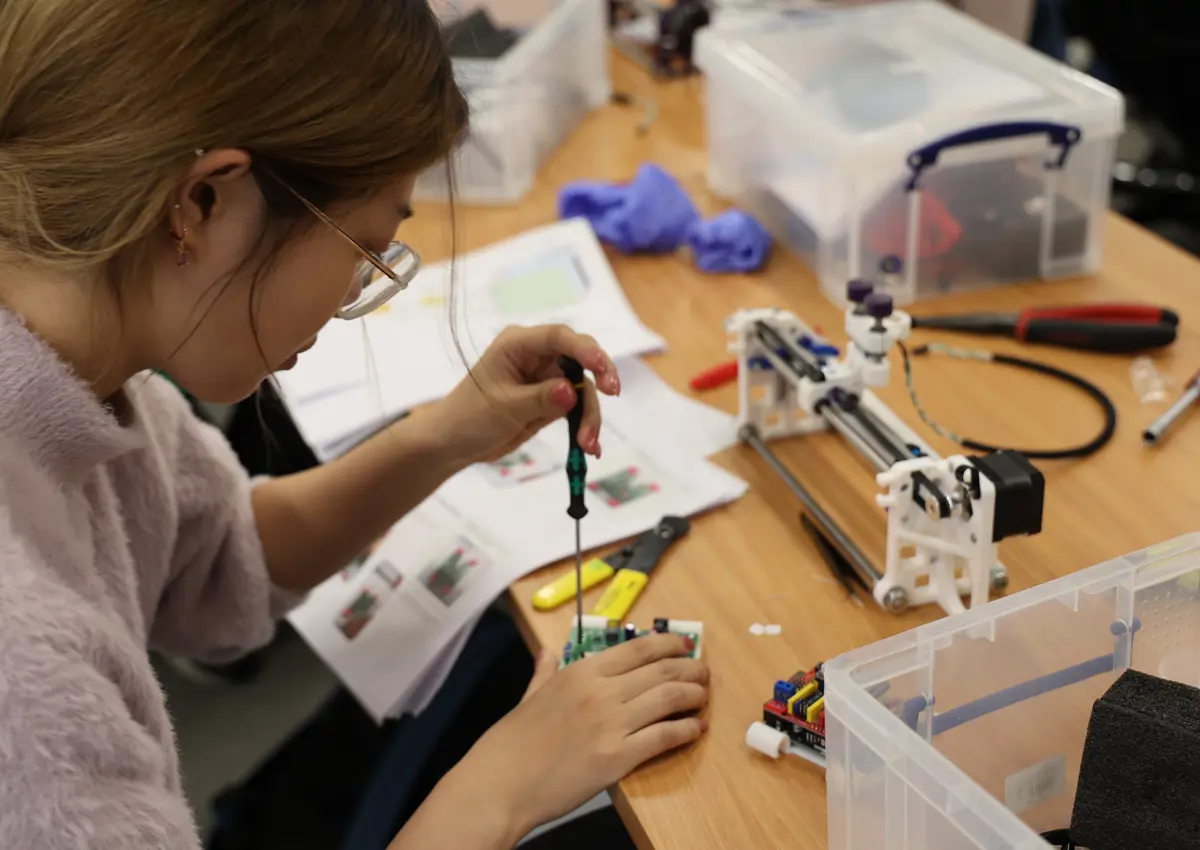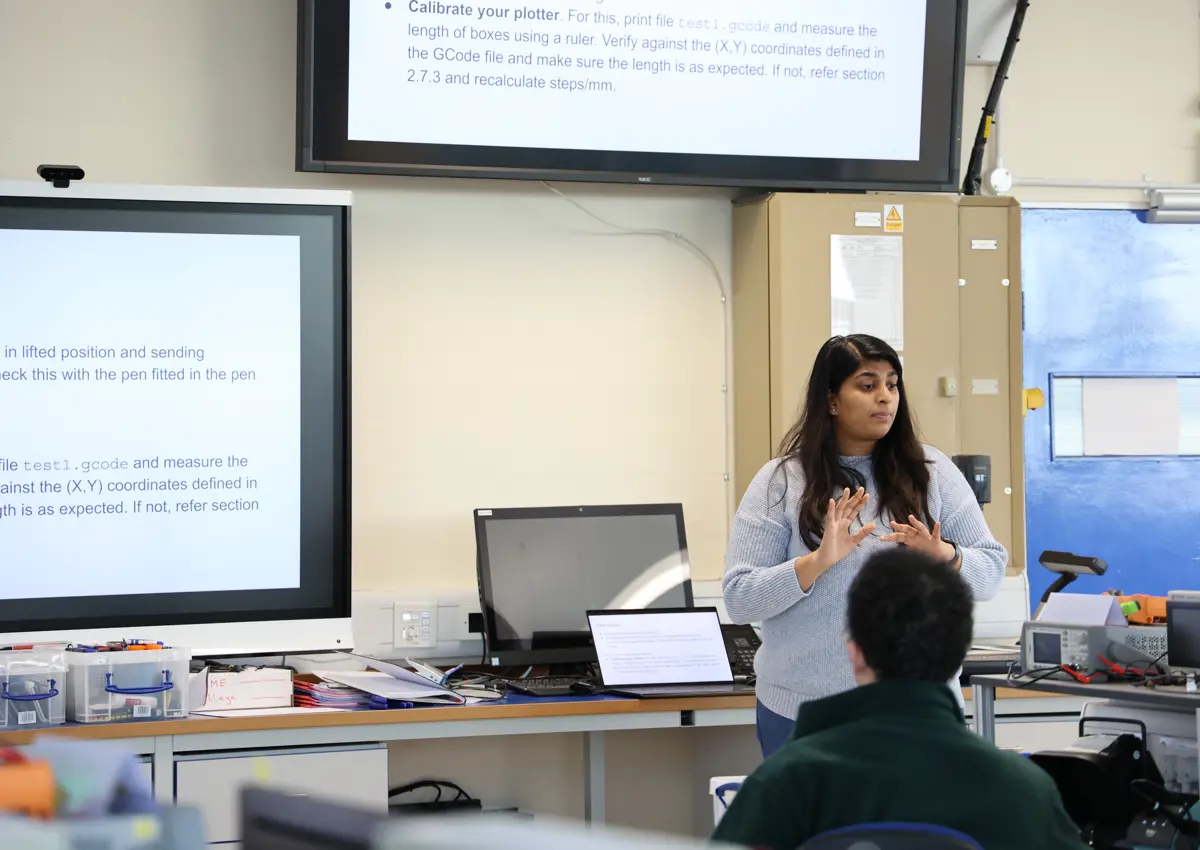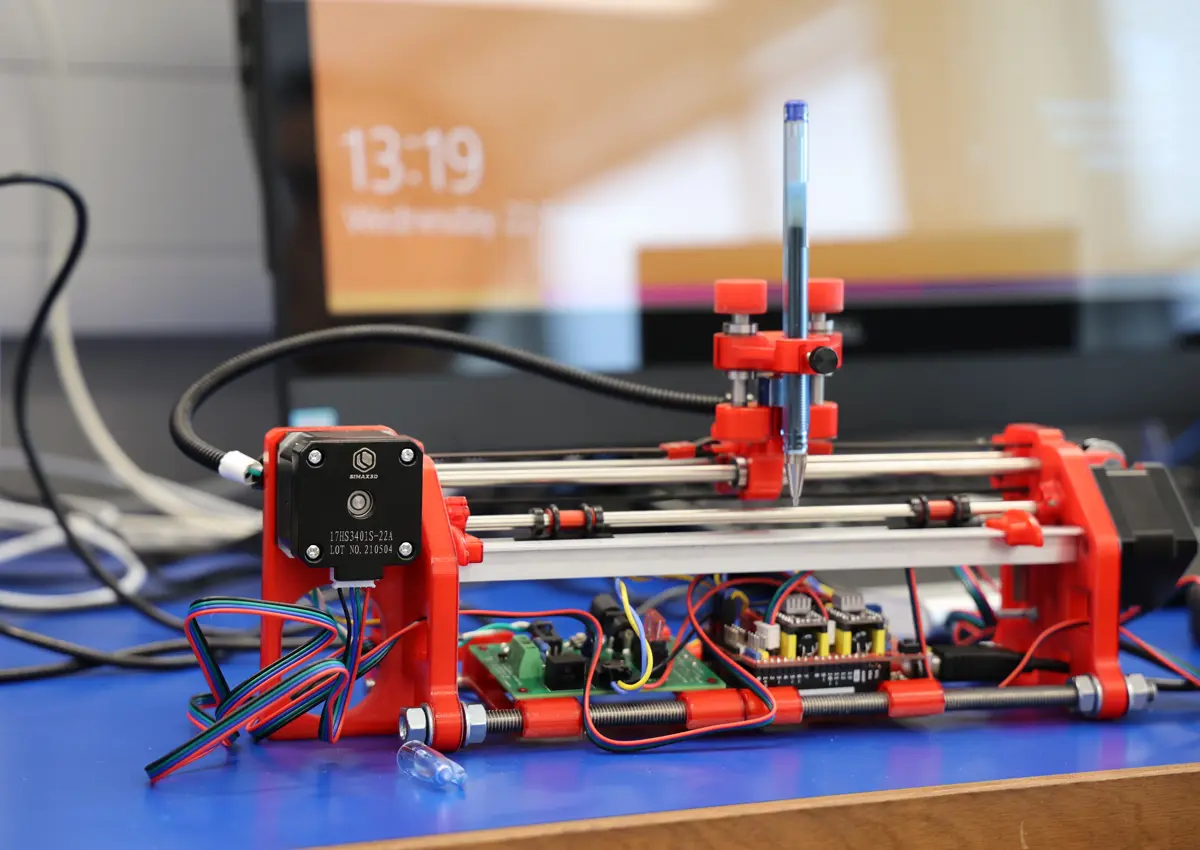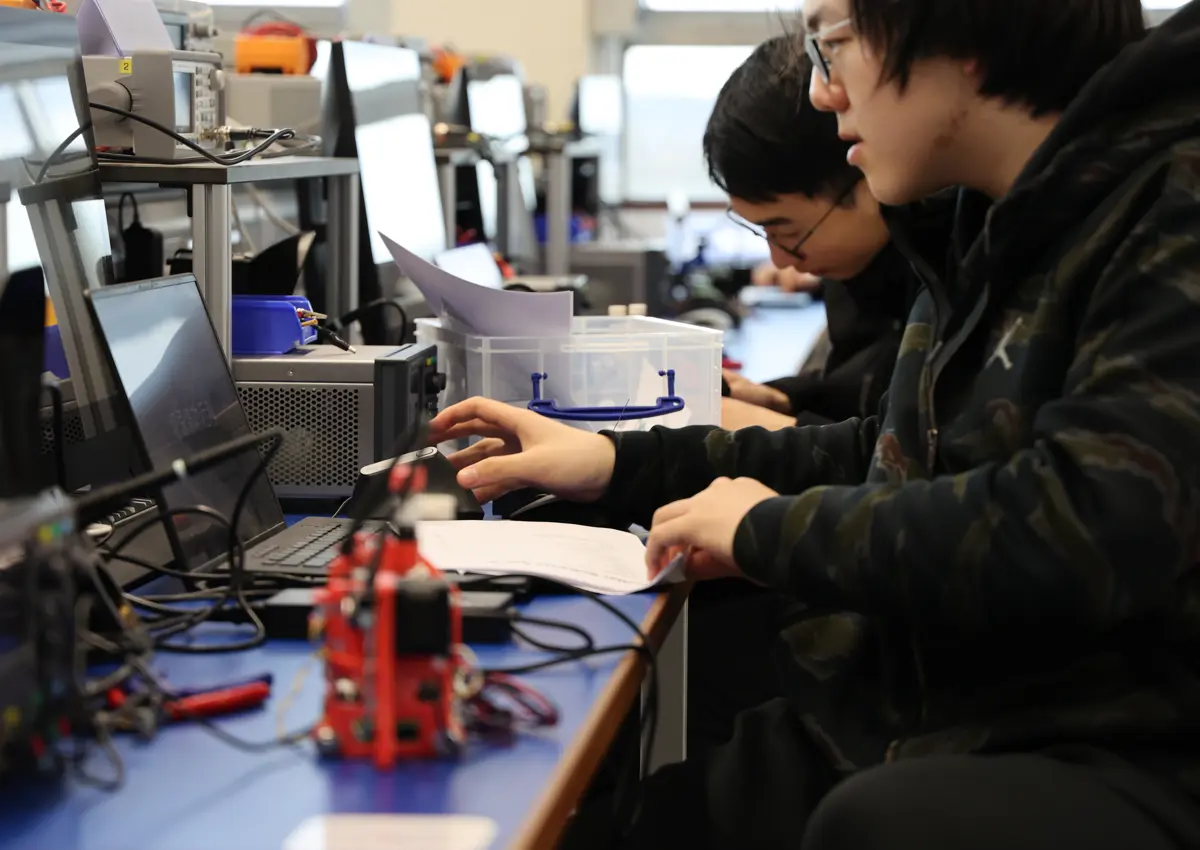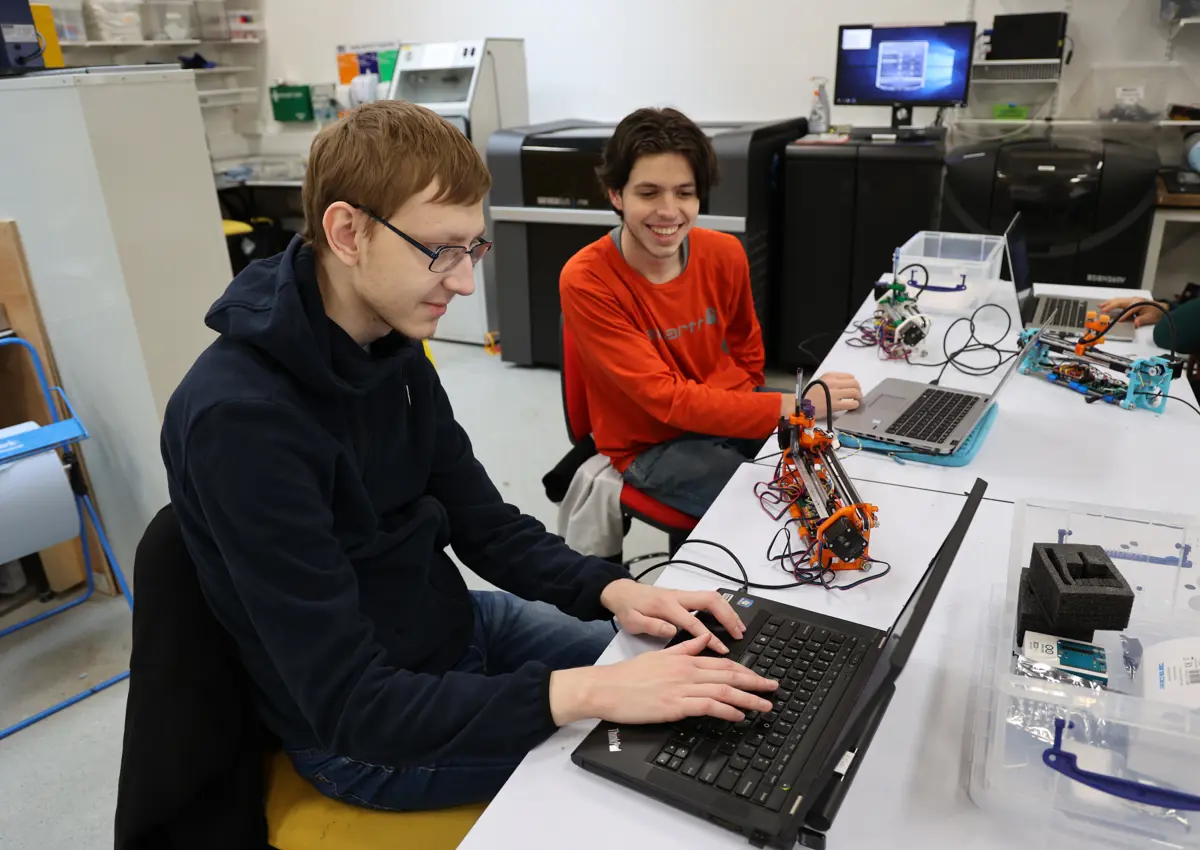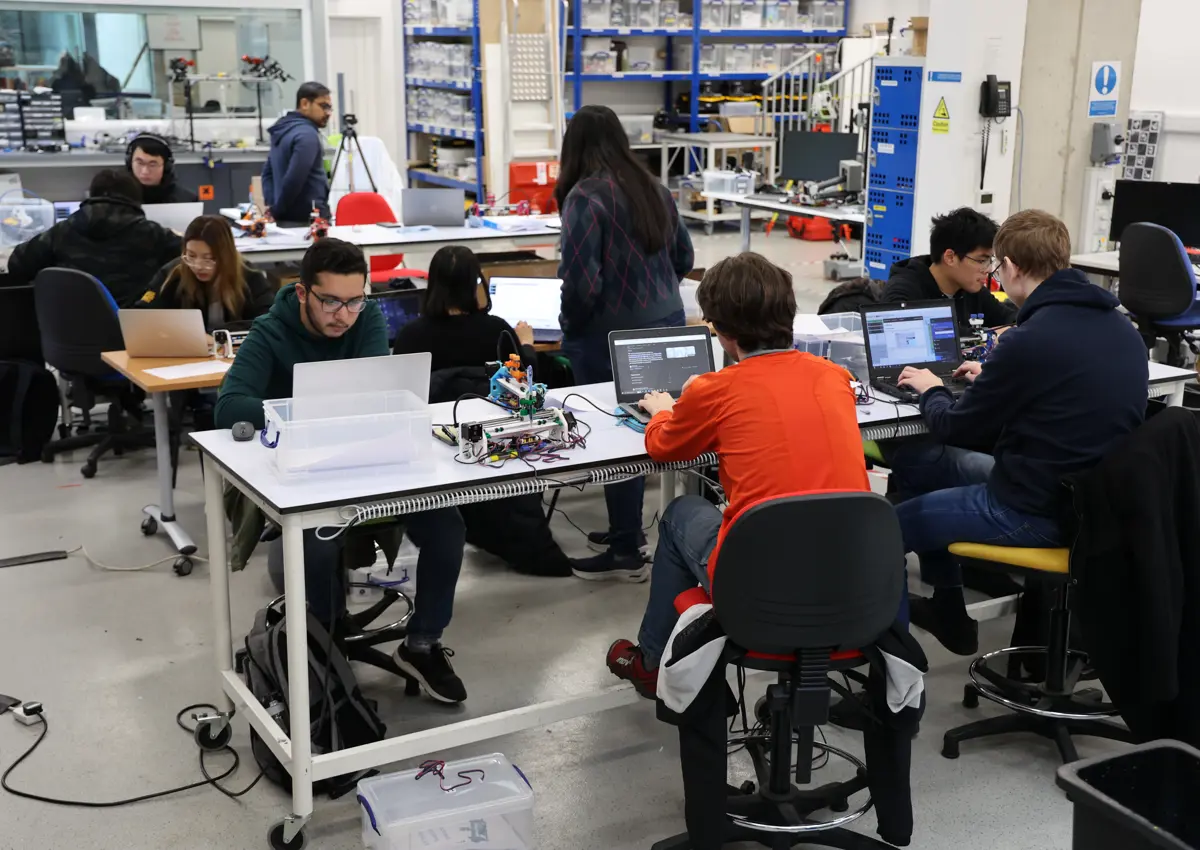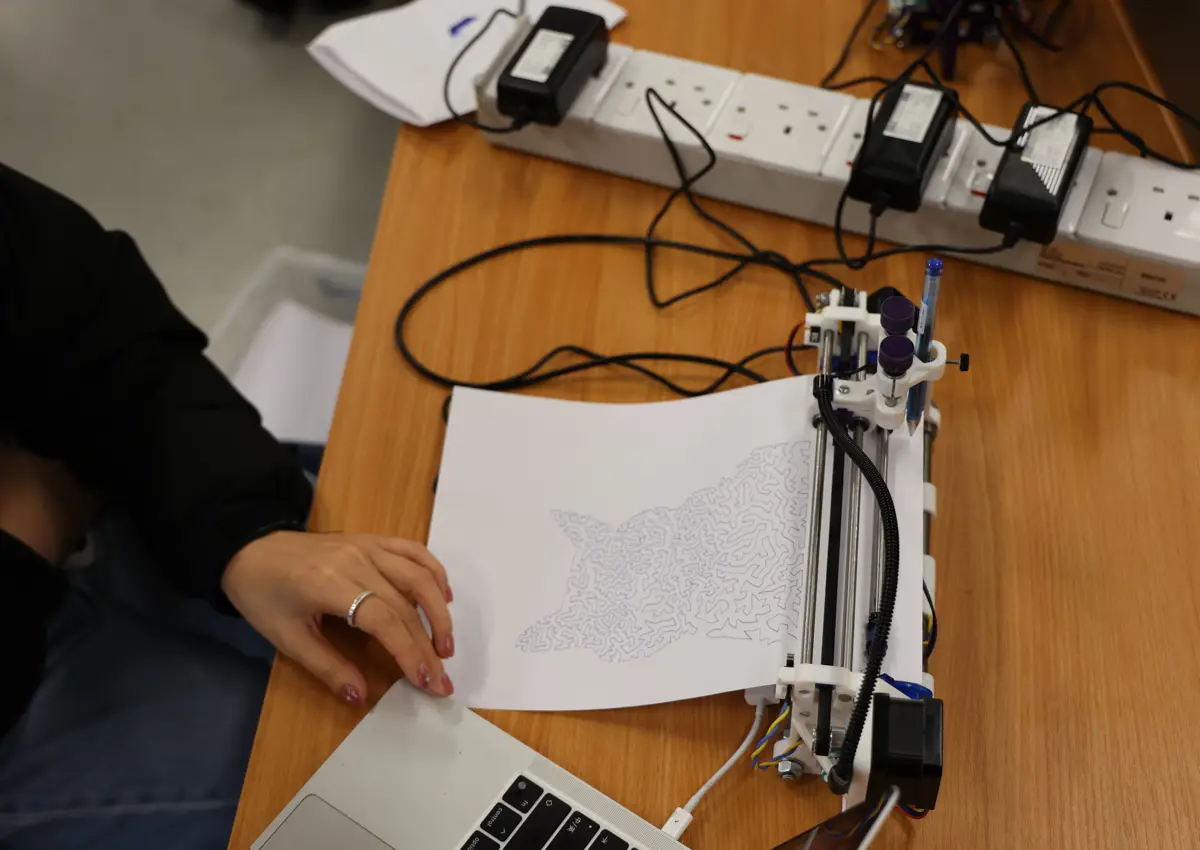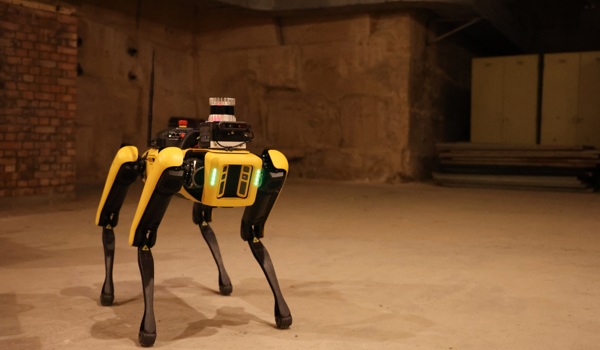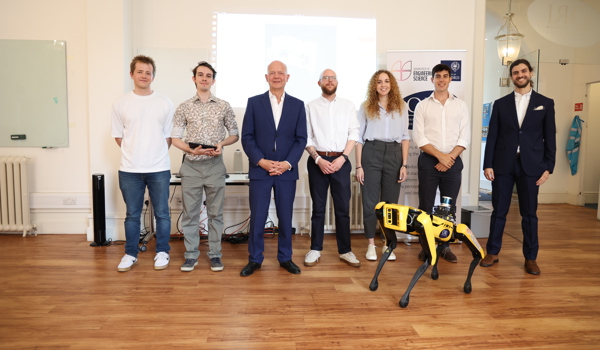03 Apr 2023
X-Y Plotter Challenge
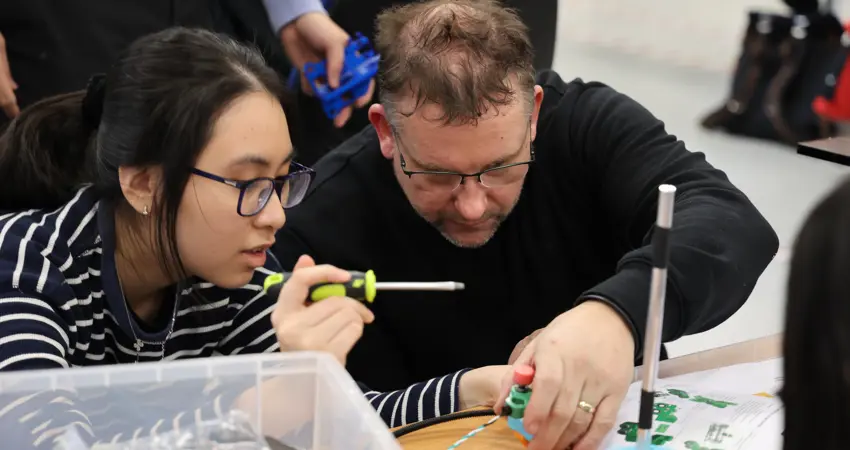
In Hilary Term 2023, twelve University of Oxford Undergraduate Engineering Science students gathered together for an exciting and innovative course in robotics. Over the course of eight weeks they took part in the “X-Y Plotter Challenge” - designing, assembling and programming their own piece of kit that they would then take home.
Throughout the challenge, students were able to gain hands-on experience in every step of the engineering process, from CAD design to 3D printing, electronic and mechanical assembly, and finally writing the software to generate the plotter commands. The aim of the course was to provide an opportunity to the undergraduate students to work on a hands-on engineering project that would allow them to experience the entire process of engineering from design to assembly and then to writing code which would allow them to control and program a simple system.
Starting from the open-source Asmograf Pen Plotter, the engineers at Oxford Robotics Institute (ORI) refined the design to improve its function, robustness, and adapt it for advanced 3D printing technology; this design was chosen for its compactness and portability.
At the end of the seven sessions, the challenge concluded with a 2 hour competition to demonstrate the capabilities of the plotter kits each student had hand crafted giving them complete creative freedom. The judges were looking for unique artwork, good performance of the plotter and demonstration of good coding skills. It was hoped that the hands-on experience gained and friendly competition from the course would motivate the students to learn more about programming, control, and robotics in general.
There were three categories of prizes -
- Most unique artwork - This prize was awarded on the basis of the complexity and the uniqueness of the art generated using the plotter. Judges were looking for the participant’s creativity and credit was given for unique ideas attempted. At the end of the competition, the students were allowed to vote for their choice of best artwork and this was factored into the score when choosing the winner!
Winner: Anyu Shan - Best performing plotter - This prize was awarded to the best performing plotter. This was judged on the basis of the quality of the print and the performance (speed, number of failures etc.) and was assessed on the basis of how well the students have tuned the settings of the plotter to ensure reliable and better performance.
Winner: Andrei Beliaev - Most unique G-code generation technique - This prize was awarded to the participant who came up with the most unique technique of generating the plotter commands (GCode). For this, the students had complete freedom to choose their choice of programming language (Python and Matlab were among the most popular choices). The participants were assessed for the novelty of their technique and for the depth of their understanding of the technique used.
Winner: Jihwan Shin
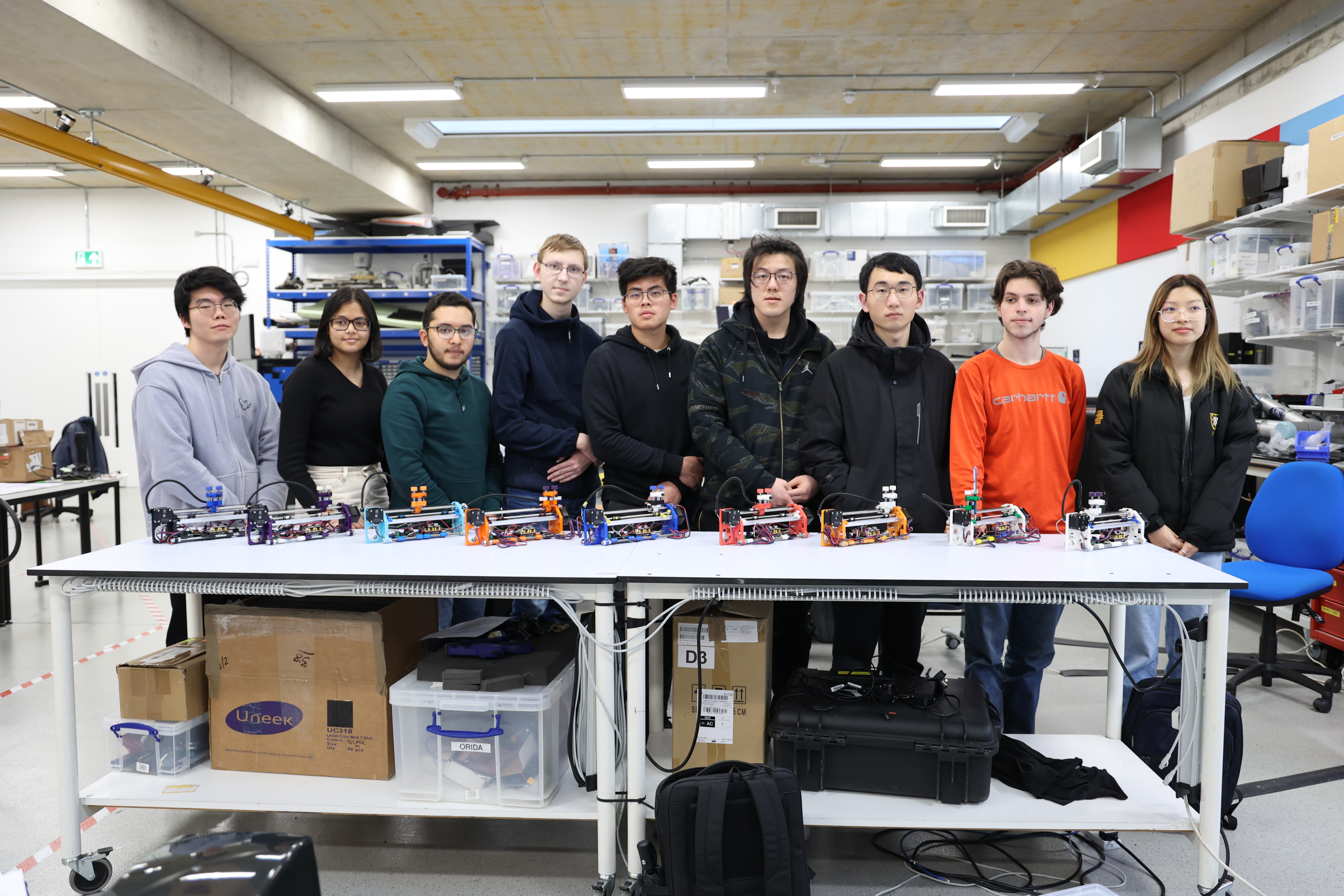

The undergraduate X-Y Plotter Challenge was a great success and left the students feeling inspired and excited about the possibilities of robotics and programming. They left with not only a sense of accomplishment but also the tools and knowledge they needed to continue learning and exploring in the field of engineering.
We would like to take this opportunity to thank those students who participated in this year's Plotter course, and to thank the Engineers who dedicated their time and passion to ensure the course was a success. Special thanks to Chris Prahacs, Arundathi Shaji Shanthini, Wayne Tubby, Matt Towlson, Stephan Mouton, Tobit Flatscher and Jon Ody.
Details of the course for the 2023/2024 academic year will be announced later this year. Any queries or questions please contact the team at plotter_challenge@oxfordrobotics.institute.
Comments from students
“I got to try out many different skills – CAD, printing, circuit building, manufacturing, programming. I feel that as a first year engineer, it gave me a better insight to the big picture of an engineering design process. This helped me a lot in figuring out how the content of the engineering course helps in the real world, and also which aspects I am the most interested in.”
“The assembly element was, in my experience, the best part of the project. I found putting the pieces together and making the mechanical and electrical sections fit together was enjoyable. Again, the help was very high quality when things went wrong.”
“The electrical part was very fun, and I am glad I got to try the surface mount method which I don't get to do in the first year of the engineering course.”
“It was very enjoyable seeing the different parts of the plotter come together and being able to develop our own gcode etc. at the end. The fact that we got to see the robotics lab and also keep the plotter at the end were great too. Helpers were always very friendly and gave clear answers to questions. It was good to see that no huge amount of knowledge was assumed, every step was explained well and was understandable even if you hadn't engaged with similar projects before.”
